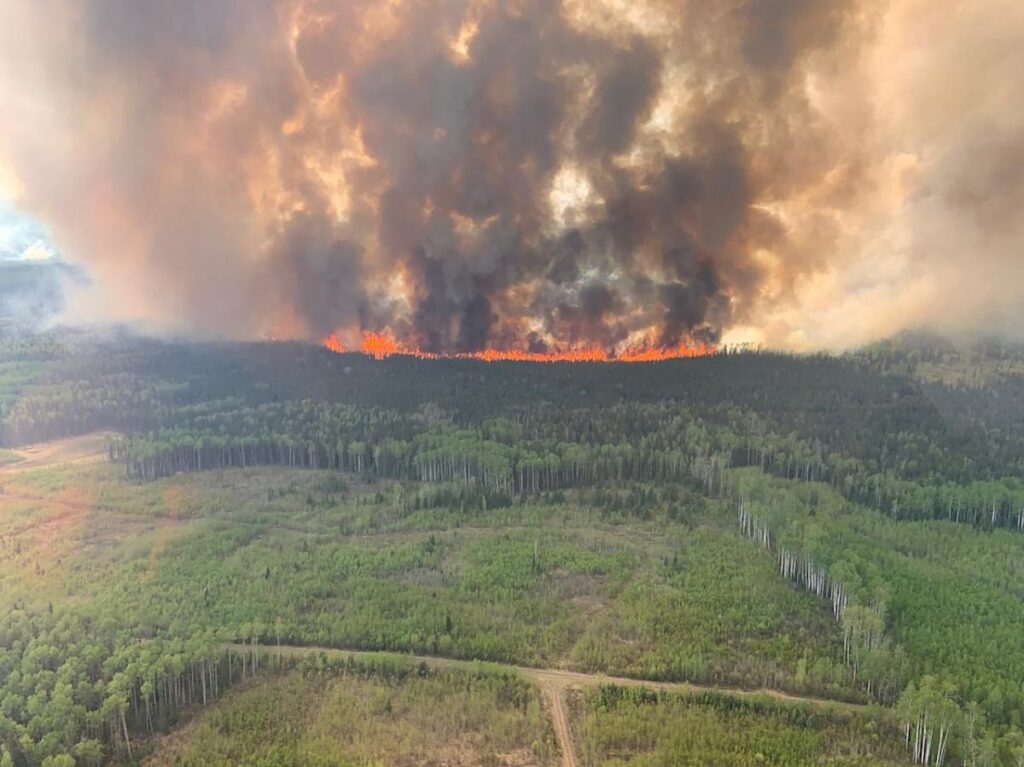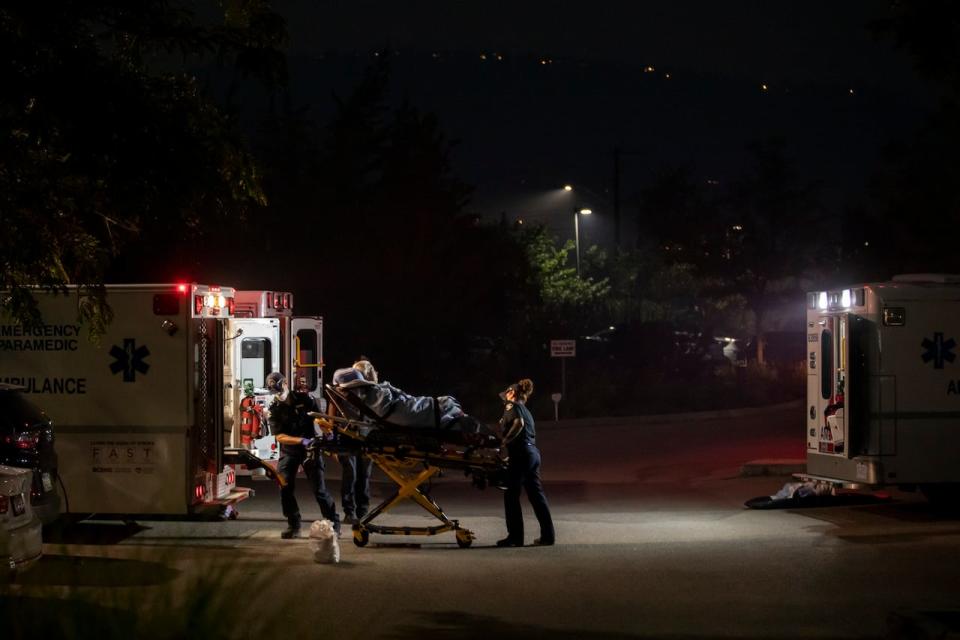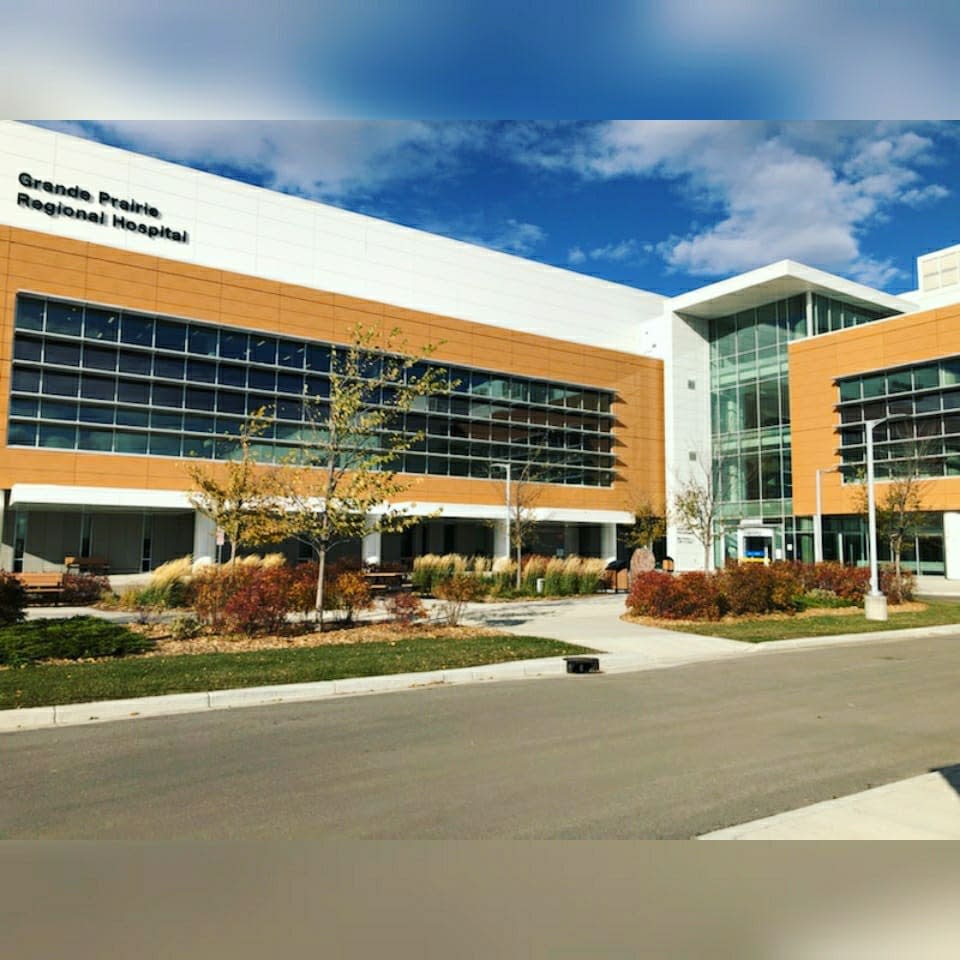At the 2023 Physicians Appreciation Dinner in Grande Prairie, Alberta, the food hadn't even been served when Candace Eddy stepped forward to deliver the bad news.
“This event involved me getting up to the microphone and really thanking the people in the room and letting them know that we're going to be doing a mass casualty type incident response, basically,” said Eddy, who is senior executive officer for the Grande Prairie district of Alberta Health Services (AHS).
Shortly after the announcement on May 6, Eddy headed to the hospital to prepare for the arrival of 43 patients who had been evacuated by wildfires from the town of High Prairie, about 150 kilometres away.
“In medicine, a lot of times you have to solve things on the spot,” she told Dr. Brian Goldman, host of CBC Radio's “White Coats, Black Art.”
During last year's historic wildfire season, the hospital served as a temporary evacuation site three times, supporting around 100 patients evacuated from at-risk areas and residents receiving continuing care. Officials and emergency personnel say the 2023 experience has taught them how to prepare and respond, with patient evacuations becoming the “new normal.”
Last year's wildfire season began with an off-duty call for Cale Holmstrom. “Lesson learned,” he said. “Never look at your work phone outside of work.”
Emergency personnel evacuate patients from Brant's Creek Retirement Home as the McDougall Creek Fire approaches the city of Kelowna, British Columbia, on August 18, 2023.
Emergency workers evacuate patients from Brant's Creek retirement home as the McDougall Creek Fire moves closer to the city of Kelowna, British Columbia, on Aug. 18, 2023. (Ben Nelms/CBC)
Holmstrom is AHS's clinical operations manager and head of the EMS station in the Slave Lake area, about 225 kilometres northwest of Edmonton. That call last year sparked an effort to move patients and long-term care residents across the vast, sparsely populated north of the province, which accounts for about two-thirds of the province.
With wildfires threatening the hospital in High Prairie, Holmstrom was preparing even before the order was given to transport patients to Grande Prairie, which is normally about a two-hour drive away.
“We wanted to have a plan in place because it's going to take us more than a few minutes to get some people up and out,” said Holmstrom, whose previous experience included responding to the 2011 Slave Lake fire and the 2016 Fort McMurray fire.
Patient inventory
During last year's crisis, he and two other medical personnel made a list of all the patients who needed to be transported. “If we needed to put them on a plane, could they get on the plane in a few steps?” he said. “Can they get in an ambulance? Do we have to treat them as a wheelchair or stretcher type of patient?”
In the end, the decision was made not to use the aircraft due to smoke from the wildfires.
Holmstrom said the convoy of school buses, ambulances and leisure buses headed to Grande Prairie avoided direct roads due to unpredictable fires nearby and chose a safer but slower route to keep patients safe.
Many of these highly-demanding patients and long-term care facility residents were transported to Grande Prairie Regional Hospital, a designated waiting area, and eventually transferred to other destinations.
Creativity and collaboration
For Eddie, creating a waiting area for patients within a hospital was an entirely new experience.
She and other members of the hospital team began gathering supplies in the hospital's auditorium, near the main entrance and capable of seating more than 100 people. Stretchers, vital signs monitors, IV poles, and mobile workstations were all brought in. Workers numbered each bed to simplify triage.
Ultimately, patients were spread throughout the hospital, including outpatient and day surgery areas.
Staff attitudes have been positive, Eddy said.
“It's safe to say there was almost excitement,” she says. “People were excited to collaborate. There was really great creativity and collaboration. It wasn't perfect, but there was a real sense of 'we can do this.'”
That attitude was necessary in a situation where everyone was working together.
“I always think the nursing staff and doctors are really important,” she says, “but we also needed a pharmacy. We needed porters to come in and help. We needed to register patients. We had managers. Everyone in the building came in to help.”
Lessons learned
Eddy and Holmstrom cited several lessons learned from 2023, especially as they expect similar crises to occur every year.
“Unfortunately, this is definitely part of our new normal,” Holmstrom said.
In preparation for this year's fire season, Eddy said the IT team created a system to track patient evacuations in real time, with information updated simultaneously to everyone using the system so no information is leaked.
Candace Eddy, senior executive officer for the Grande Prairie region in Alberta Health Services' vast northern region.
Candace Eddy is senior executive officer for the Grande Prairie district in Alberta Health Services' vast northern region. (Alberta Health Services)
“If we're on call in Grande Prairie, we can log in and update our information and EMS can access that information, so it creates a more integrated and consistent system that can accurately track patient movements.”
Both Holmstrom and Eddy spoke about the importance of community-wide coordination.
“Plan ahead with your local government, allied agencies, fire departments, wildfire response teams,” Holmstrom said, pointing to the relationships between hospitals and school districts in her area as an example.
“One phone call and we had probably six school buses waiting in the parking lot,” he said.
Holmstrom said it was important to remain calm and take the time to talk to evacuated patients.
“There's nothing worse than 100-plus people panicking and screaming, 'Where the hell are we going?' Remaining calm and collected was definitely to everyone's advantage.”
The new Grande Prairie Hospital is scheduled to open on Dec. 4.
Grande Prairie Regional Hospital is set to open in late 2021. (Deanna Funk/Facebook)
Other learnings were very specific but useful: Holmstrom said she learned the importance of certain dementia patients getting along with one another in small spaces, and Eddy learned the importance of labeling after members of her medical team were tasked with finding which walker or wheelchair belonged to whom.
After the first evacuation last year, Eddy said the team used spreadsheets and labels to track equipment and acted quickly to ensure the problem wouldn't reoccur.
“One of the things we do well is learn and strive to get better,” she said.






